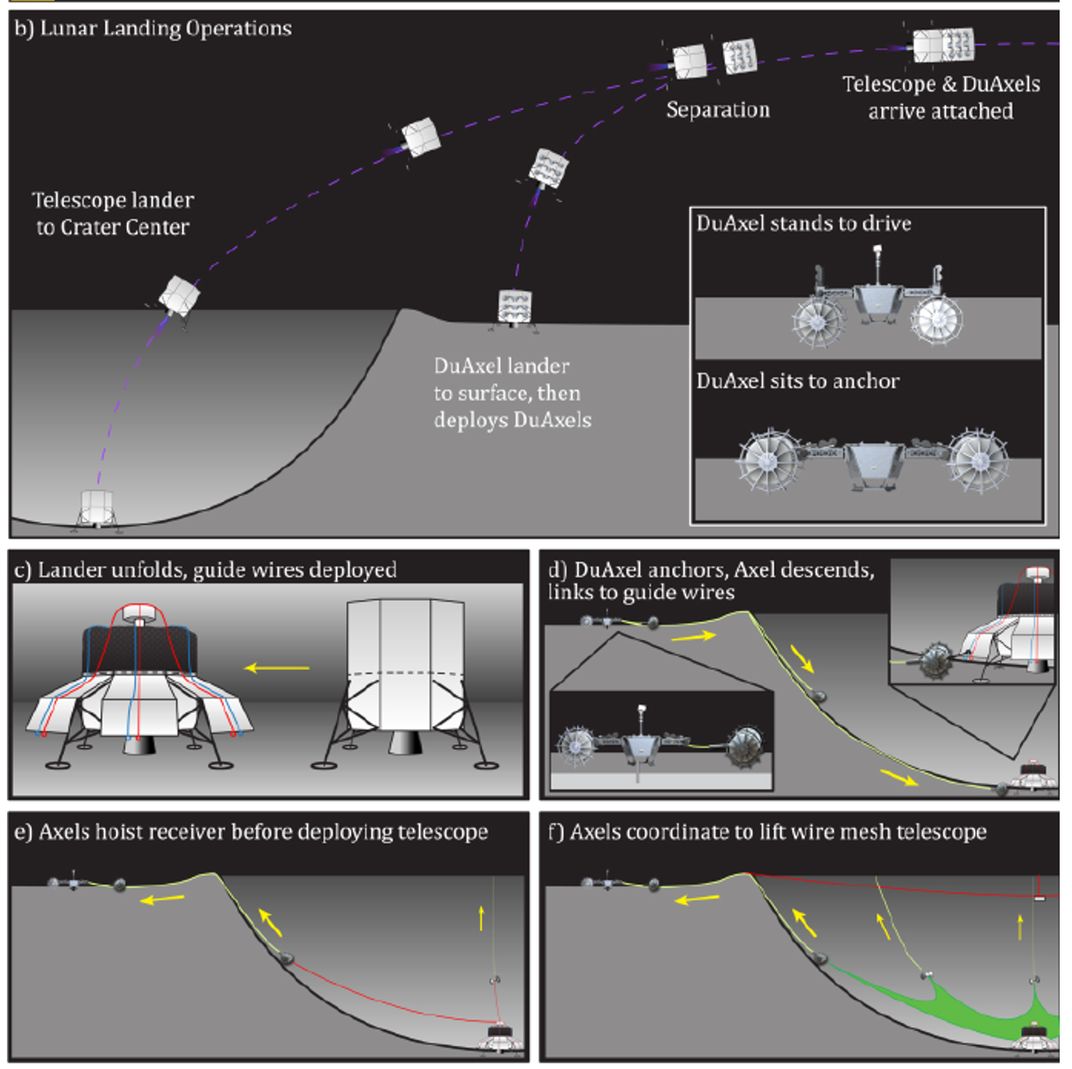The Far Side of the Moon May Someday Have Its Own Telescope, Thanks to NASA Funding
The project hasn’t yet been greenlit, but a proposal just got major funding to explore the potential for the lunar observatory
/https://tf-cmsv2-smithsonianmag-media.s3.amazonaws.com/filer/53/74/53744e5a-f711-49b5-9f52-62748d435725/niac2020_bandyopadhyay.jpg)
The far side of the moon is protected from all the noisy, wavelength-jamming signals our planet emits. That’s why NASA recently decided to fund a project that could someday put a powerful radio telescope on the moon’s far side, reports Becky Ferreira for Vice.
Positioned with a clear shot of the cosmos, this observatory could collect ultra-long, low-frequency wavelengths—some of the faintest and most difficult-to-detect signals reverberating through space. According to Gizmodo’s George Dvorsky, some of these elusive wavelengths are left over from the universe’s earliest days, stretching back many billions of years, and could give researchers a glimpse into the birth of the cosmos.
Earthbound telescopes have so far struggled to home in on these mysterious signals, which get drowned out by human-made radio transmissions. Long wavelengths, especially those above 10 meters (33 feet) in length, also have a tough time penetrating our planet’s thick atmosphere, Yasemin Saplakoglu reports for Space.com. Even telescopes aboard Earth-orbiting satellites sometimes struggle to acquire data amidst the din.
If built, this new lunar telescope could change all that. Called the Lunar Crater Radio Telescope (LCRT), the device—the brainchild of JPL roboticist Saptarshi Bandyopadhyay—is still entirely theoretical, and has only made it through the first of three phases of the selection process of NASA's Innovative Advanced Concepts Program. But this early achievement has earned Bandyopadhyay and his team $125,000 to assess the project’s feasibility.

The money will be put toward devising “the mechanical design of LCRT, searching for suitable craters on the Moon and comparing the performance of LCRT against other ideas that have been proposed in the literature,” Bandyopadhyay explains in an interview with Gizmodo. That means the telescope remains in “very early stages of development,” Bandyopadhyay tells Vice.
If moved forward, the project would deploy a team of intrepid, wall-climbing robots to install the telescope in a 2-to-3-mile-wide crater on the moon’s far side. With a gargantuan diameter more than 3,000 feet wide, the observatory would be the largest filled-aperture radio telescope—or a telescope that collects data with a single dish—in the solar system, according to Vice.
There’s no guarantee the project will come to fruition, and the competition for further funding is stiff. Other proposals advancing through NASA’s selection process include a project that may explore the subsurface ocean on Jupiter’s moon Europa and another that would pioneer humankind’s first space pharmacy. The goal, according to the program’s website, is simply to “change the possible” in aerospace.
/https://tf-cmsv2-smithsonianmag-media.s3.amazonaws.com/accounts/headshot/10172852_10152012979290896_320129237_n.jpg)
/https://tf-cmsv2-smithsonianmag-media.s3.amazonaws.com/accounts/headshot/10172852_10152012979290896_320129237_n.jpg)